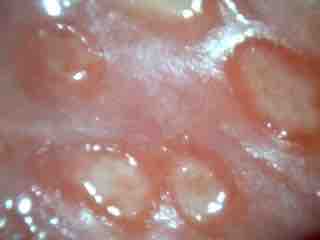Genital ulcers are skin ulcers located on the genital area and can be caused by a number of sexually transmitted diseases or other noninfectious conditions such as yeasts, trauma, lupus, rheumatoid arthritis or Behcet's syndrome.
Sexually Transmitted Genital Ulcers
When the reason for a genital ulcer is an infection, it can be caused by a number of sexually transmitted diseases. Among the most common are Herpes simplex virus (HSV), the genital herpes agent ; Treponema pallidum, that causes syphilis; Chlamydia trachomatis, the cause of chlamydia; and Haemophilus ducreyi, the chancroid agent. In the United States, the most common reasons for genital ulcers in young and sexually active patients are genital herpes and syphilis.

Genital Ulcers
Ulcers caused by genital herpes.
Symptoms and Diagnosis
Genital ulcers can be painful or painless depending on the type of infection. Their appearance can be slightly different from one disease to another. Other than ulceration, enlarged lymph nodes in the groin area can be present, along with blisters and sores. Proper diagnosis cannot be obtained solely through examination and medical history. Testing for a specific infectious agent depends on the likelihood of its presence. In the U.S., testing is recommended for syphilis (by serology and darkfield microscopy) and HSV (culture, serology or PCR), and in cases of chancroid outbreaks or based on the medical history, for the presence of Haemophilus ducreyi. In about 25% of the cases, the reason for the ulcer will not be identified by laboratory testing. Syphilis, genital herpes and chancroid have all been associated with increasing the risk for HIV transmission. The CDC recommends routine HIV screening for all patients who present with genital ulcers.
Treatment
Since the ulcers are symptoms of a number of infectious agents, the treatment is chosen according to the disease agent if it can be identified. Quite often, therapy has to start before identification is complete in order to decrease the chances for transmission and to increase the probability of successful treatment. The choice of medication is made, after careful examination of the symptoms and all epidemiological circumstances, based on the most likely causative agent.